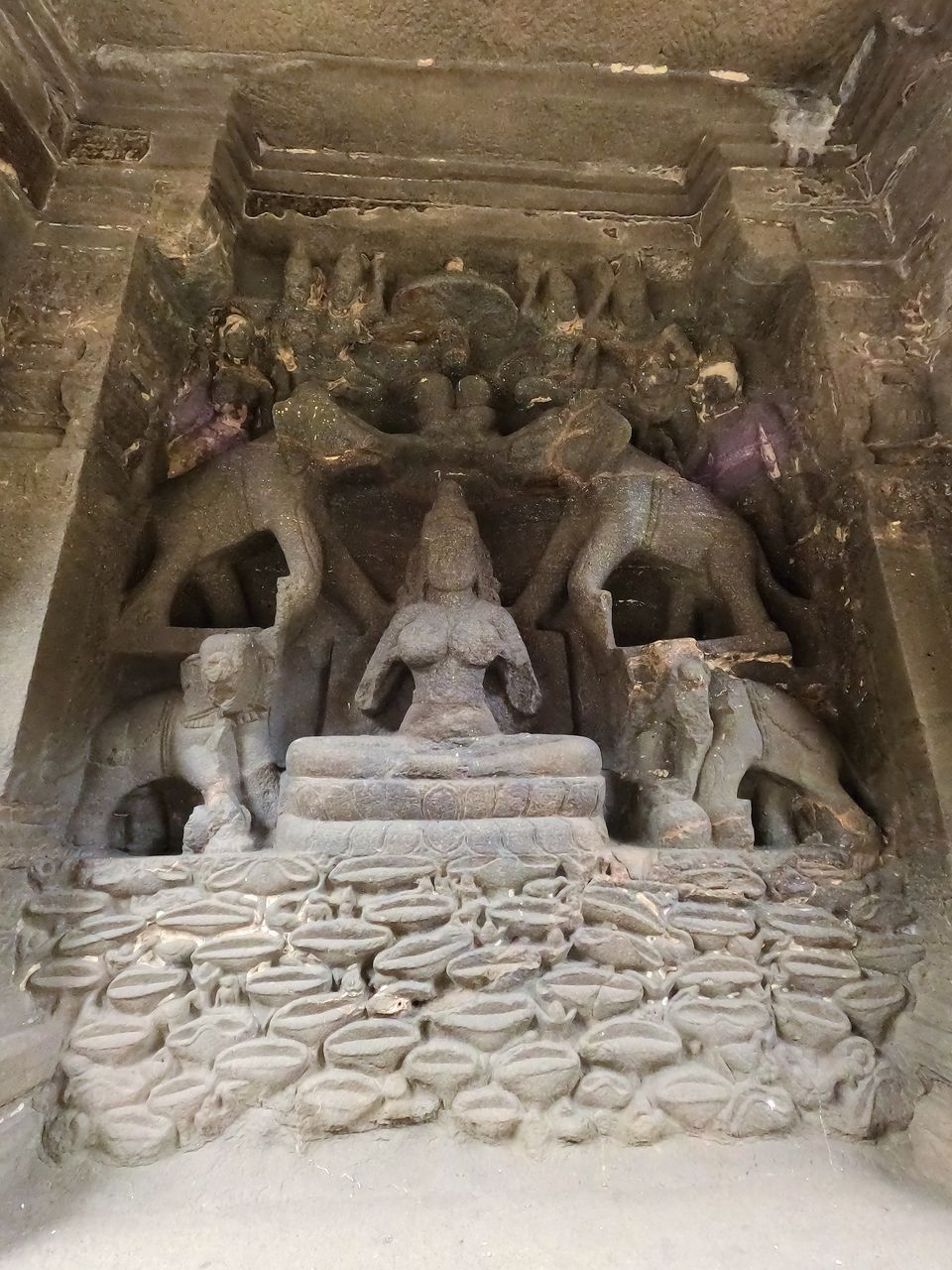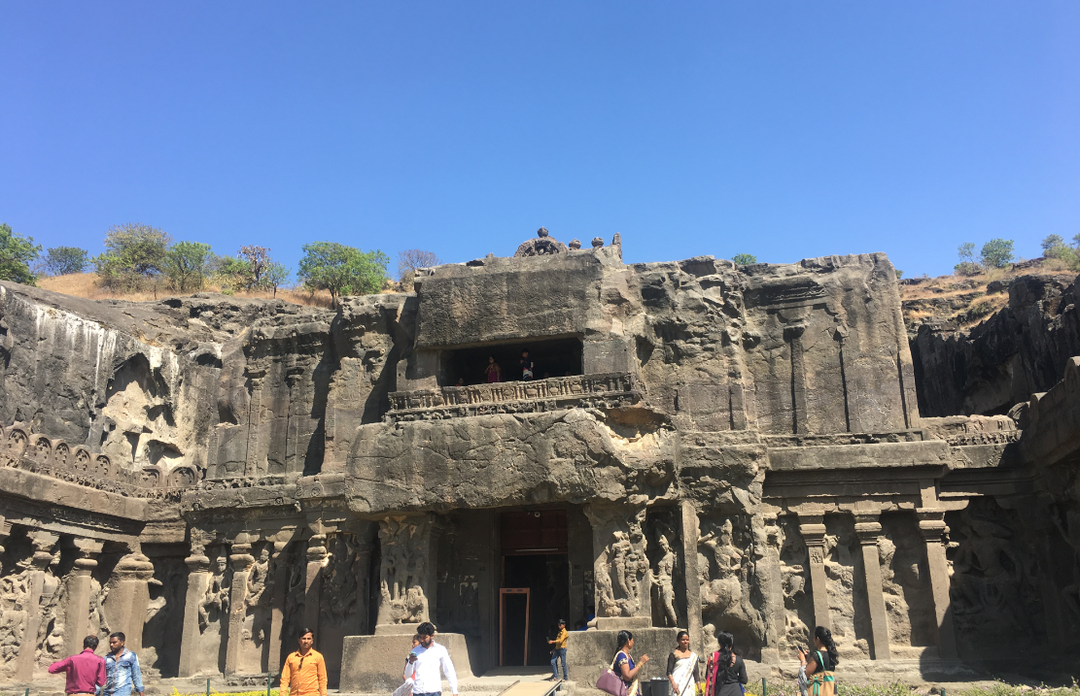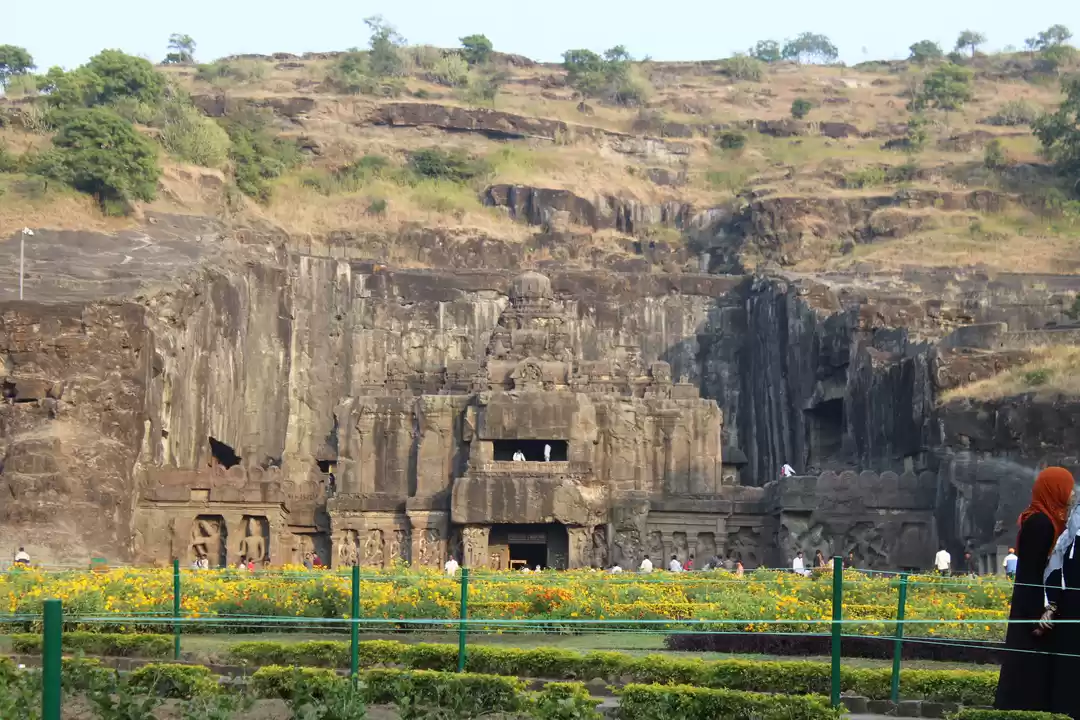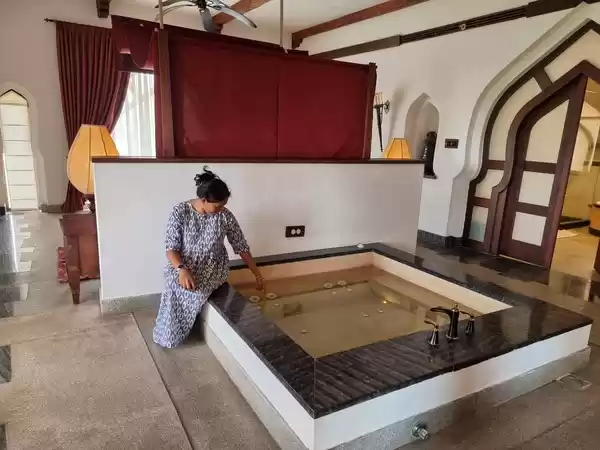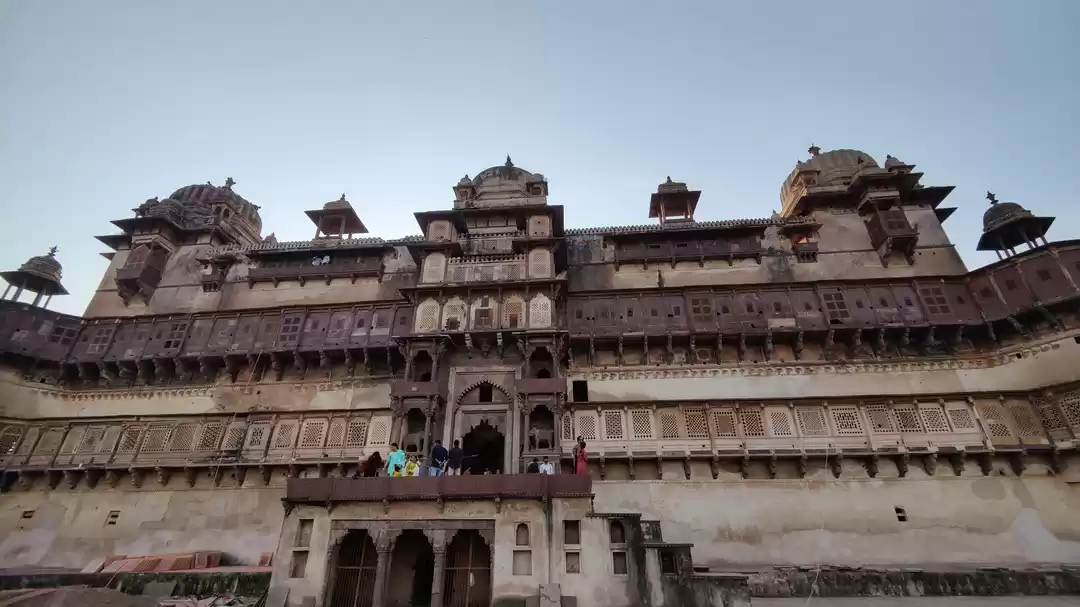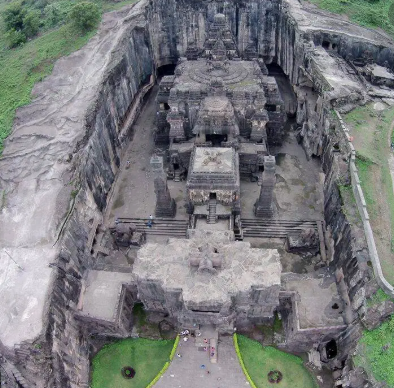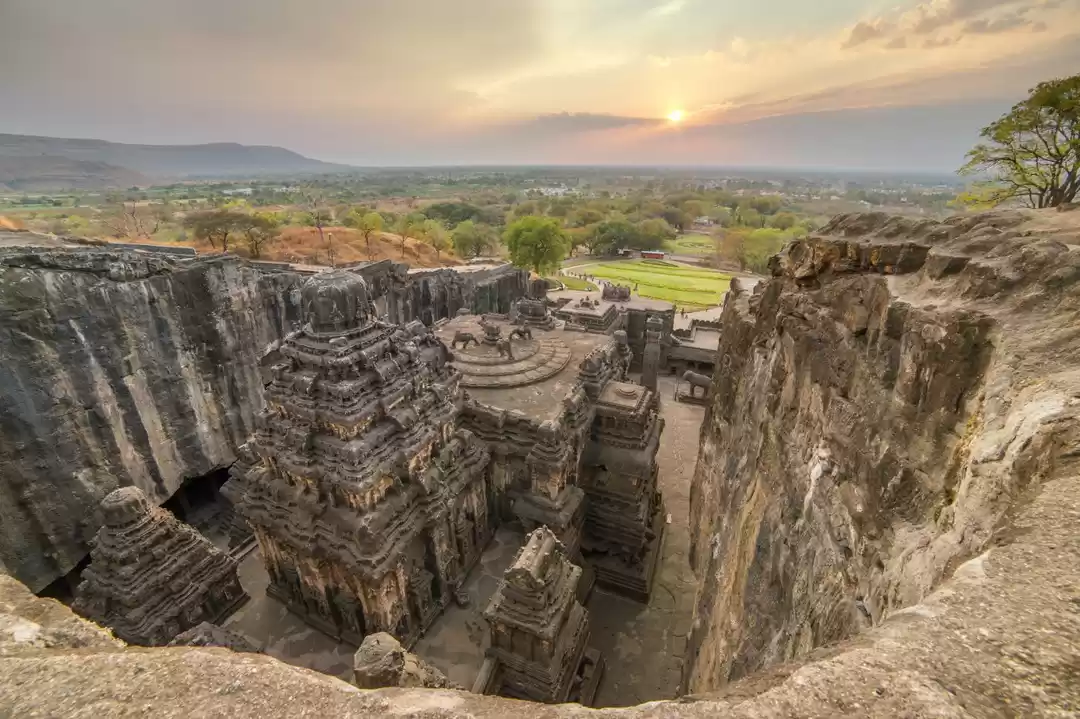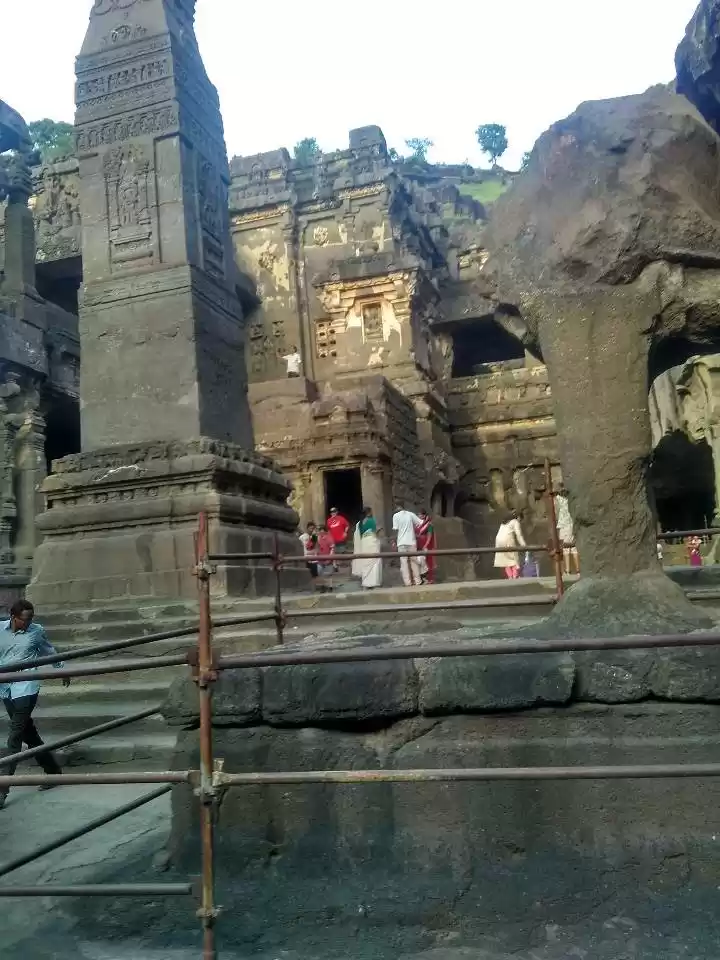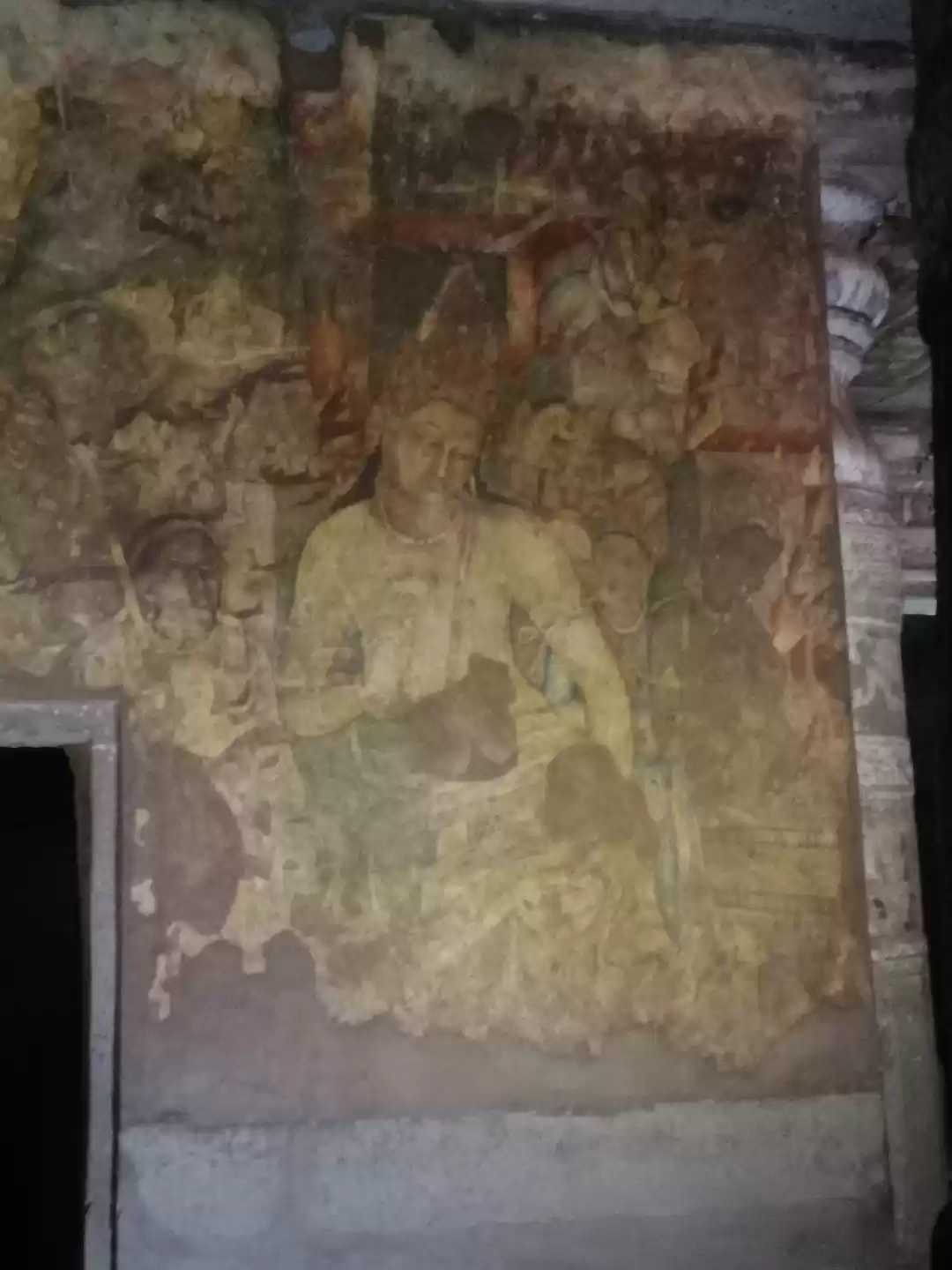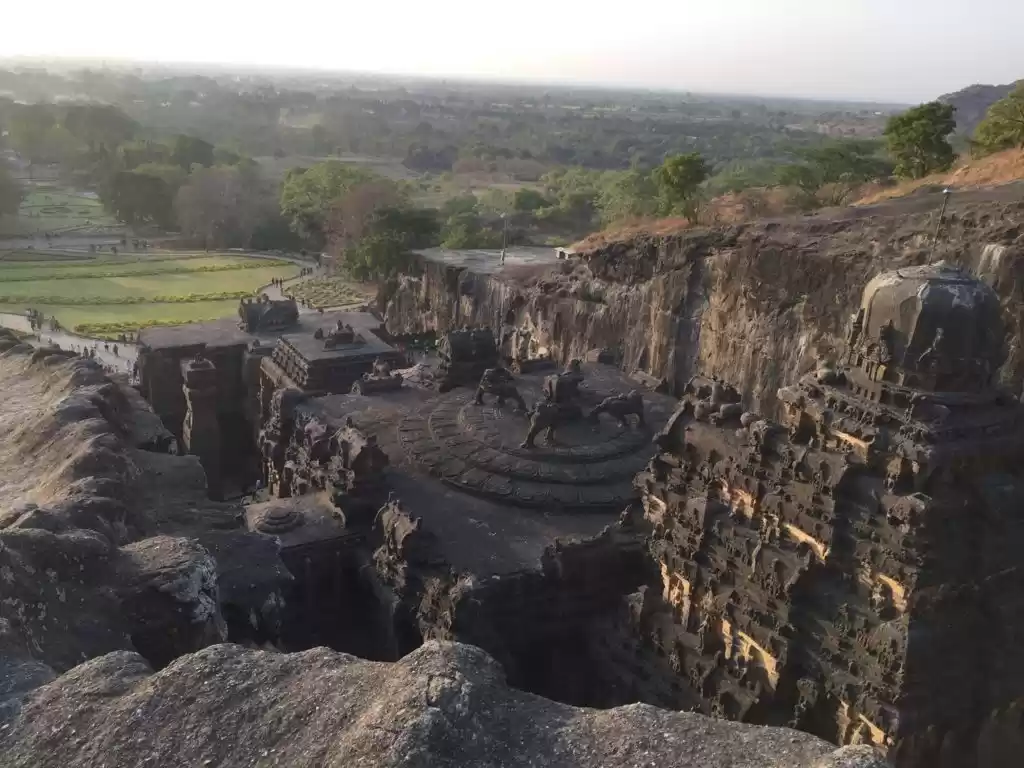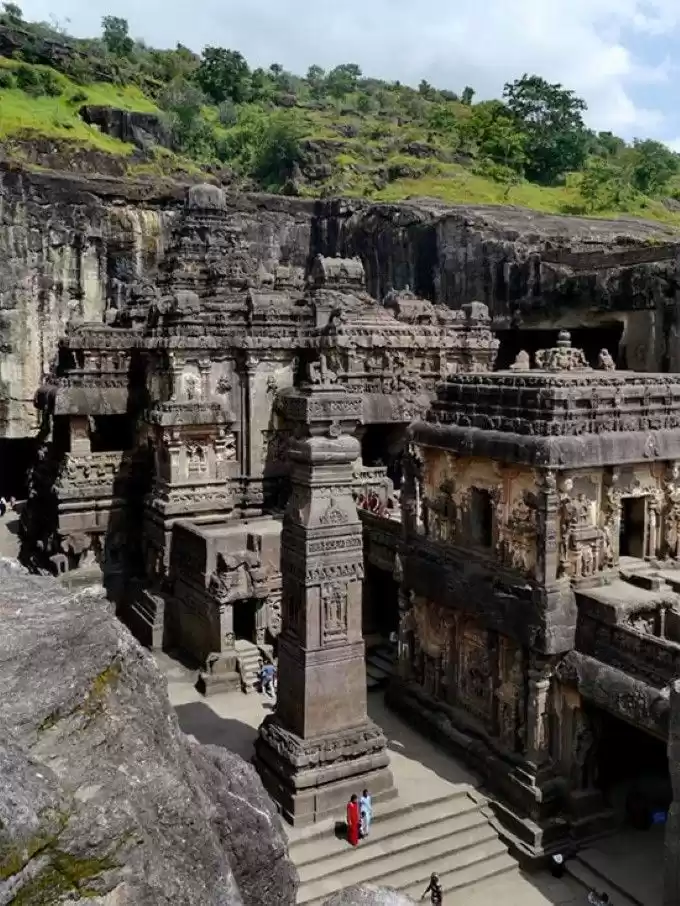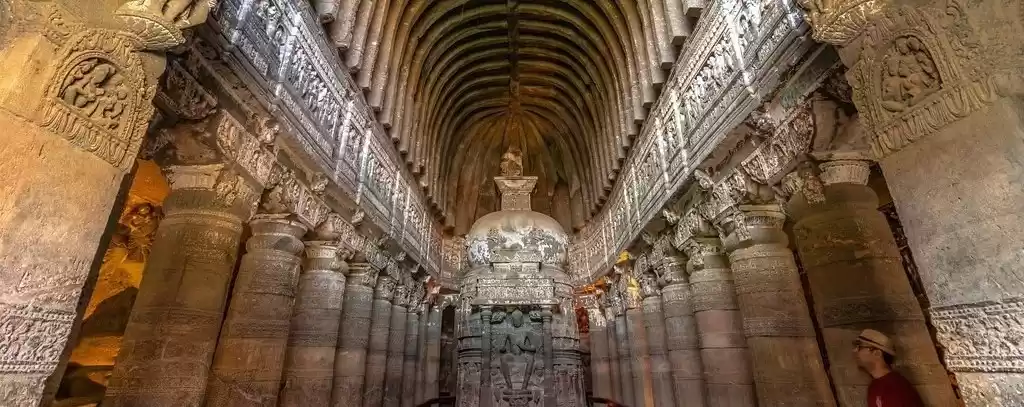The Kailasa Temple @ Aurangabad.
Why is this Temple not considered as one of the wonders of the World, is one of the many questions that arise when you visit this ancient Monolithic Temple? Kailasa Temple is part of an extensive cave complex that is more than 1200 years old.
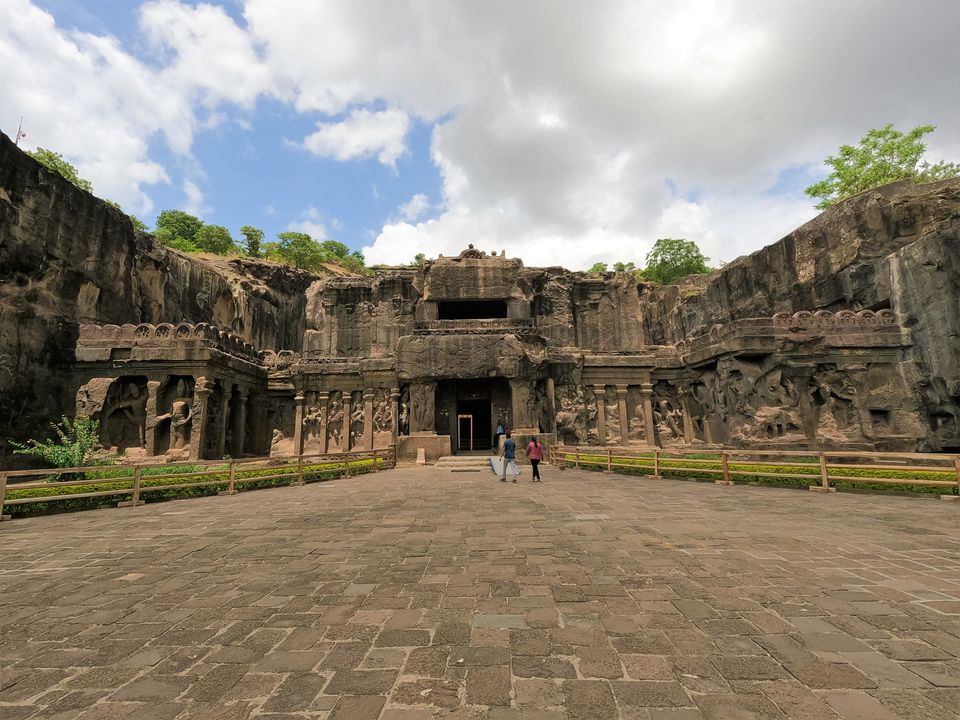
Let’s put ourselves in the shoes of the architect, sculptors and engineers who designed, crafted and worked out the mechanics of this unbelievable structure. Remember this type of construction requires an acute sense of pre-planning, mathematical genius and mindboggling precision as you cannot make alterations if an error was made, keeping in mind this structure which was built from top to bottom, unlike other structures which are built from bottom (foundation) to top (Shikhar).

The Hindu king ordered the temple built after he prayed to Shiva to save his wife from sickness. Having gotten the orders, would the architect have had envisioned this entire complex before starting the work or would he have started with the "let’s go with the flow" attitude (I’m sure this would have not been the case). Did he make drawings and if he did, how did he manage to keep them till the temple complex was completed? Did he draw sketches on something or did he instruct the sculptors and then they took his vision forward? The timeline for the Kailasa temple is said to be around 20 years! How motivated would all the labour, masons, sculptors and the entire team be to pull it off in so less time! What level of coordination would it have taken within the team to complete this masterpiece? It not only is an architectural marvel but also a marvel of time management and handling human resources.

The so-called engineers of the time, how did they calculate the load a column would take and the depth of the beam should be, how deep could they cut the rock? How did they convince the workers to carve a temple from a giant mountain without it collapsing? Did they have calculations for the size of the cantilever (an overhang projecting out of the support system of columns and beams) or did they leave it to fate. (The later seems improbable as it has survived for more than a thousand years). How did they manage to align and keep the geometry of the temple so precise?
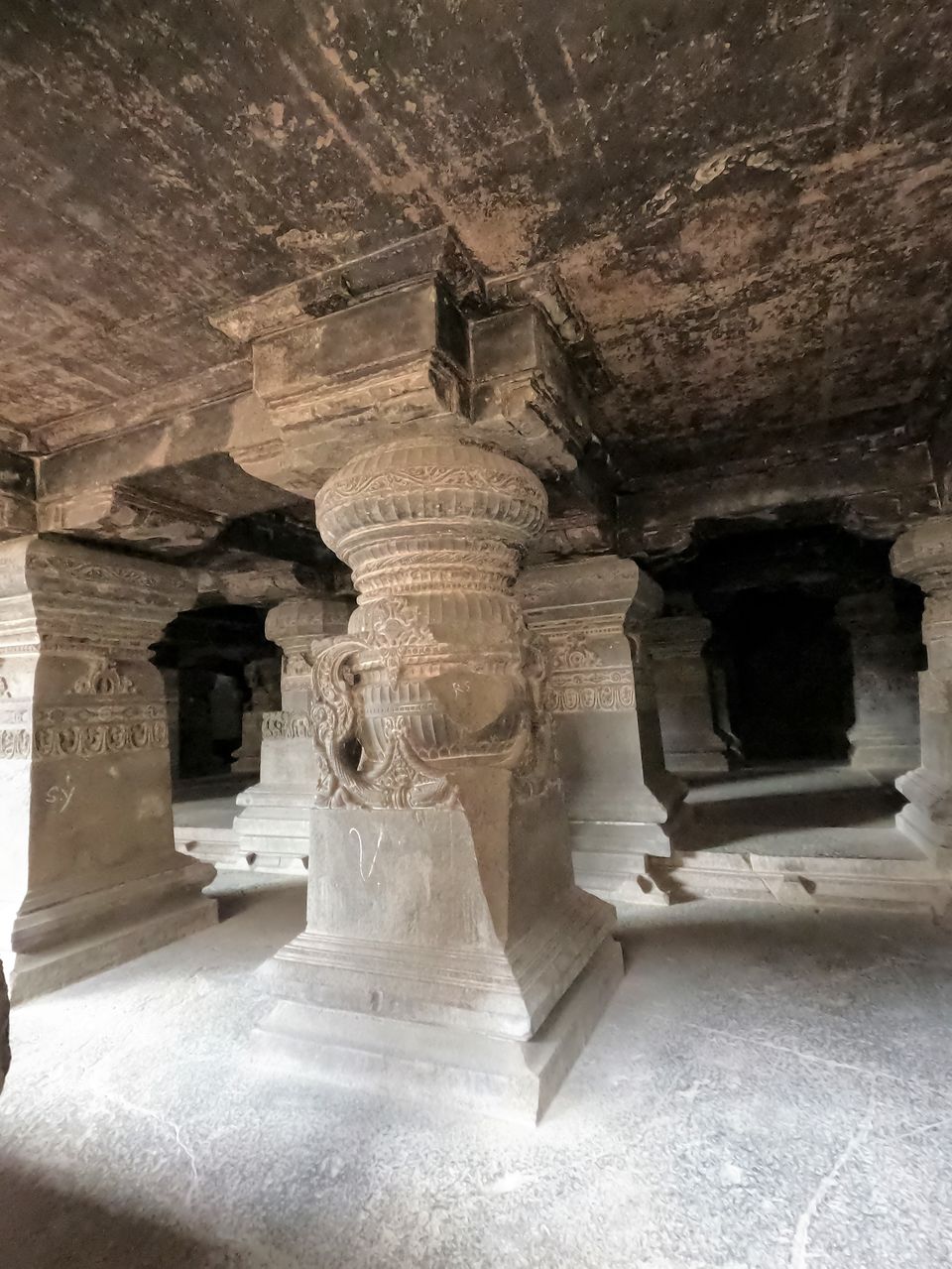
Even though India had a rich tradition of sculptors and artists but what they have achieved here in this temple complex is next to impossible. Basalt stone being one of the most difficult stones to carve in, it is not soft or workable as the stone temples we see in other parts of India. Just to think of it that they achieved all this with a pair of hammer and chisel is incredible. Imaging sleeping on a scaffolding and chiselling a mountain surface above you! The sheer scale, the carvings and intricacy of detailing will put to shame all our modern technology and equipment’s to shame.

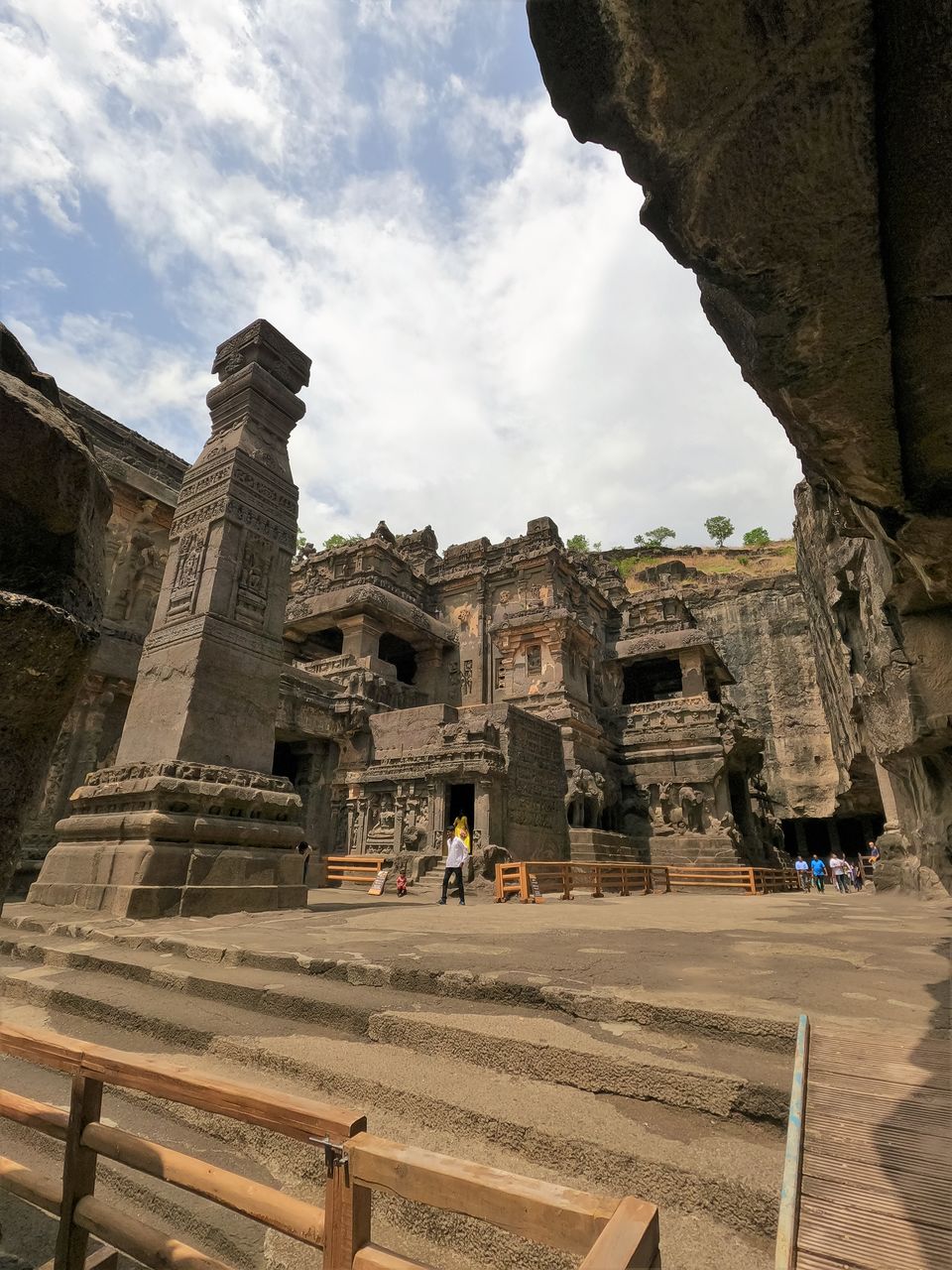
To sum up and bring to light the magnitude of Kailasa temple. It was built in the 8th century; it took about 500 years to build it. A megalith carved from a single mountain block is considered as one of the most remarkable rock cut temples of the world. The 107 feet high temple is a part of the Ellora cave complex which spans for abut 2kms. The rock cut temple was made in a U shape, 50 m deep and about 2, 00,000 tonnes of rock was removed to shape it.
All of this with a pair of Chisel and Hammer!
